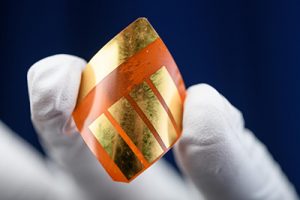Perovskite-based solar cells are all around great. They offer energy efficiencies similar to those of traditional silicon-based cells, are lightweight, simple and cheap to produce, and offer physical flexibility that could unlock a wide new range of installation methods and places, according to Georgia Teach Research Horizons.
The only problem: figuring out how to produce perovskite-based energy devices that last longer than a couple of months.
Researchers at Georgia Institute of Technology, University of California San Diego, and Massachusetts Institute of Technology may be closer to solving that problem.
Sponsored by the U.S. Department of Energy and the National Science Foundation, the researchers published a study that states that by adding alkali metal to the traditional perovskites it could lead to better performance.
“By looking at the composition within the perovskite material, we can see how each individual element plays a role in improving the performance of the device,” said Yanqi (Grace) Luo, a nanoengineering PhD student at the University of California San Diego.
In doing so, the researchers discovered that when the cesium and rubidium were added to the mixed bromine and iodine lead perovskite, it caused the bromine and iodine to mix together more homogeneously, resulting in up to two percent higher conversion efficiency than the materials without these additives.
“We found that uniformity in the chemistry and structure is what helps a perovskite solar cell operate at its fullest potential,” said David Fenning, a professor of nanoengineering at the University of California San Diego.
Nevertheless, researchers also observed that while adding rubidium or cesium caused the bromine and iodine to become more homogenous, the halide metals themselves within their own cation remained fairly clustered, creating inactive “dead zones” in the solar cell that produce no current.
“Having these dead zones would typically kill a solar cell,” said Fenning. “But in these perovskites, we saw that the dead zones around rubidium and cesium weren’t too detrimental to solar cell performance, though there was some current loss. This shows how robust these materials are but also that there’s even more opportunity for improvement.”
The findings adding to the understanding of how the perovskite-based devices work at the nanoscale that could lay the groundwork for future improvements.



